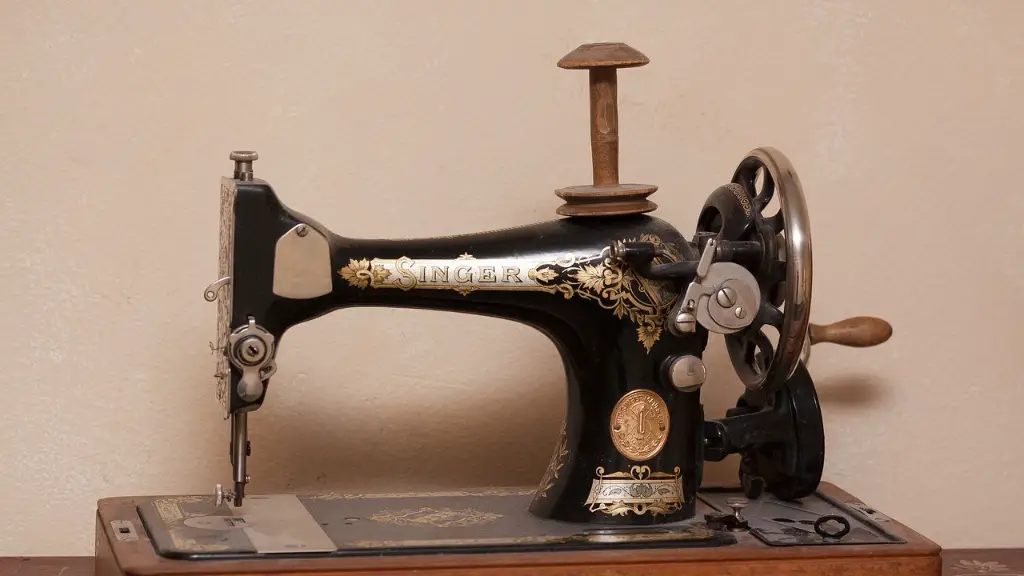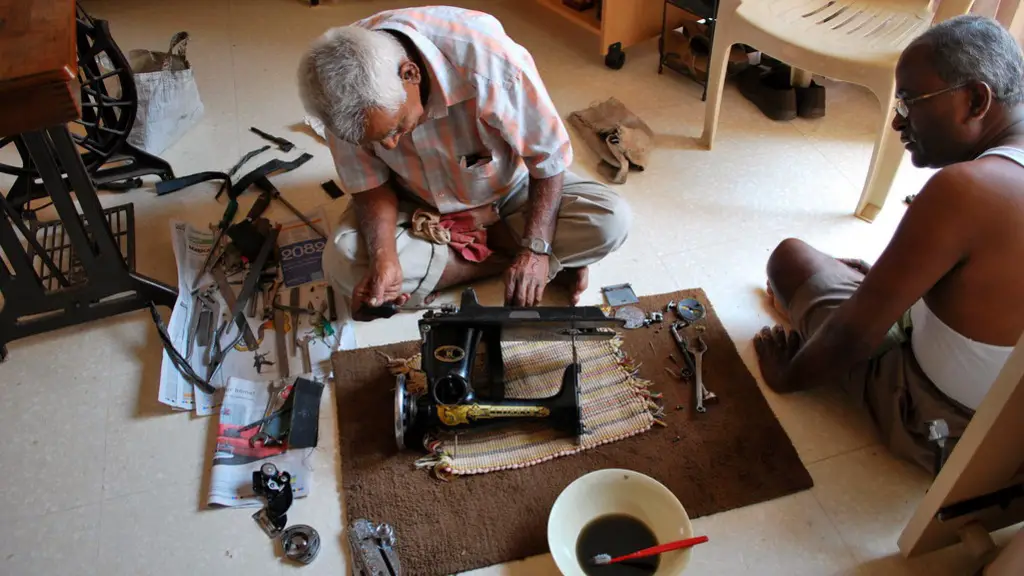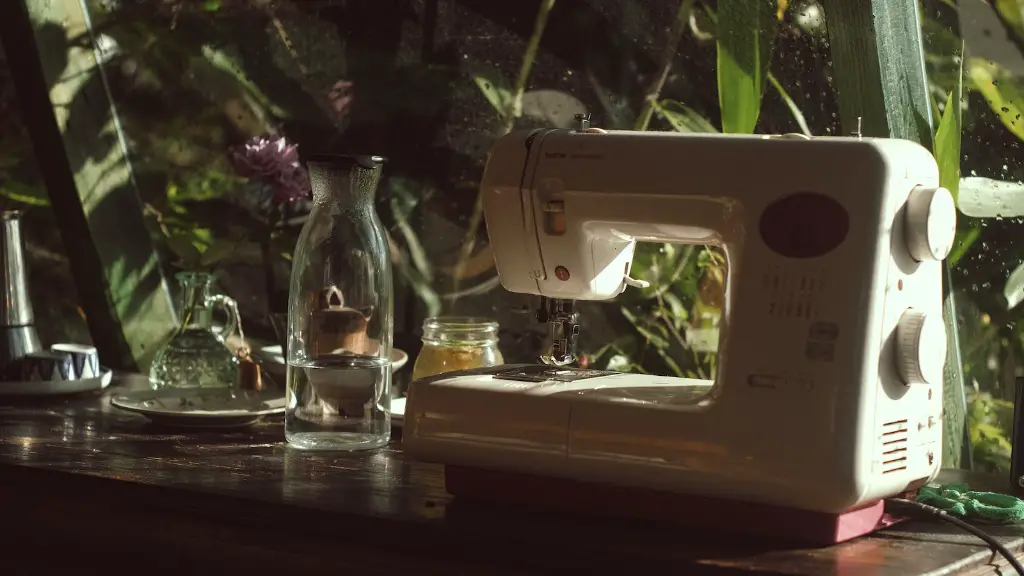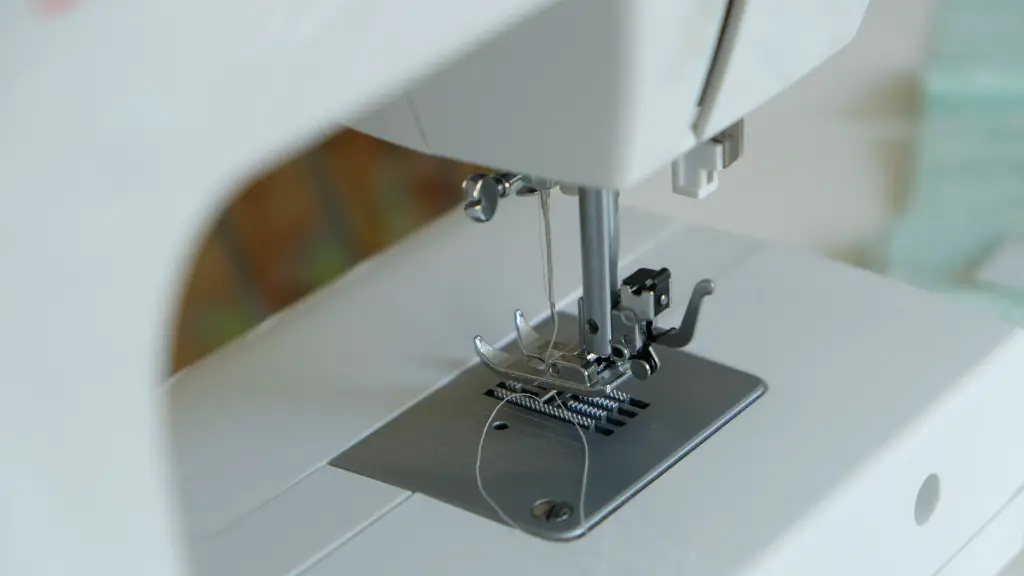Small Businesses
The introduction of the sewing machine revolutionized the economy, especially in the textile industry. It allowed small businesses to benefit from increased production capabilities and drastically reduce costs. The economic impact they made was significant as they were seen as a cost-effective solution to the basic need of humans – clothing. Small businesses increased their production and profits, as they now had more freedom to tailor clothing to the customer’s needs and craft different products quickly. This provided more employment in the garment industry, which helped families support themselves financially.
Furthermore, manufacturers who could formerly only cater to individual orders had an opportunity to mass-produce items. With machines doing much of the work simultaneously, manufacturers could produce a large number of customized garments quickly and at a fraction of the cost. This made them more competitive and profitable, as they were now able to satisfy more orders and reach more consumers. As a result, many more people had access to reasonably priced clothes.
Urban Development
The sewing machine had a strong impact on urban development. Increased production eventually led to the development of industrial districts, where businesses had access to the necessary infrastructure and resources to succeed. This created large employment opportunities for a growing middle class, who could now find work in large industrial workspaces. More people in a city meant an increased tax base that could help fund civic projects and new infrastructure. This also led to increased investment in the city, which in turn encouraged more businesses to set up in the area and created a larger talent pool for potential employees.
Taxes from the manufacturing industry helped fund the construction of new roads, streets, and transportation to ease commutes. Sewing machines also helped create a vibrant textile industry that further led to improvements in the city’s infrastructure and architecture. This in turn had a positive knock-on effect in terms of employment opportunities and economic growth.
Global Trade
The introduction of the sewing machine also had a global impact. The number of garments that could be produced in a day, combined with the reduced cost of production made it possible for businesses to export their goods to other countries. This meant that more goods and services were available to people in different parts of the world, as businesses could now cater to markets that were further afield.
Having the ability to penetrate global markets also allowed small businesses to increase their profits and improve their bottom line. Increased trade and the ability to reach a wider customer base also improved the overall economy. By providing goods to customers for cheaper, businesses were able to take advantage of different markets and increase their profits, which in turn helped reduce prices for domestic goods.
Women’s Rights
The sewing machine also played a major role in changing society. Prior to the invention of the machine, much of the garment industry was done by hand, which meant it was a labor-intensive process. This created more job opportunities for women who, up until then, were mostly confined to the household. The sewing machine allowed women to take on the roles of seamstresses, giving them more autonomy in their lives and opening up more spaces to make a living. This in turn empowered women, giving them the opportunity to become financially independent, and take part in the workforce.
Prior to the sewing machine, women had less access to education and other job opportunities as most of their energy was spent on producing clothing by hand. The introduction of the machine enabled more women to work and subsequently, freeing up time to pursue other interests. This was especially impactful for lower-income women, who had few options for employment.
Increased Productivity and Efficiency
The sewing machine was highly efficient, and what was once a long and tedious task of stitching garments by hand was reduced to mere minutes with the machine. This increased efficiency meant that businesses could get more work done in significantly less time, raising production rates significantly. This enabled businesses to produce a large quantity of garments at a much cheaper cost. This meant they could offer products at a much lower cost, enabling them to compete in the market, and acquire more customers.
This also made the production of garments more consistent and accurate, as machines were better at producing identical patterns and sizes. This saved businesses a lot of time and resources, as they no longer needed to individually measure fabrics and sew threads. This also increased customers satisfaction, as they could now order more sizes and various styles of clothing much more easily.
The Impact on Working Conditions
The introduction of the sewing machine improved working conditions for garment workers. Such improvements included better wages for workers, improved ventilation, and fewer hours worked. Before the invention of the sewing machine, garment workers had to work long hours in hazardous conditions to produce garments. This was due to the lack of machines and technologies to automate the process. With the introduction of automated machines, workers could now work fewer hours and have access to better health and safety guidelines in the workplace.
Skills in the garment industry also improved, as the sewing machine allowed for greater precision and quicker production. This enabled workers to learn more complicated techniques, as well as produce high quality garments with more intricate details. Furthermore, the machine allowed workers to focus more on the finer aspects of their craft, as they were no longer spending all of their time stitching garments by hand.
Competition and Growth
The introduction of the sewing machine changed the garment industry significantly, as it gave businesses of all sizes the opportunity to compete in the market. It allowed businesses to produce garments at a much cheaper cost, meaning that owners could now provide their customers with higher quality garments for a much lower price. This enabled them to compete with larger businesses, as they no longer had to charge exorbitant prices in order to make a profit.
This encouraged many new businesses to enter the market, as they knew they could rely on the sewing machine to make production easier. This significantly increased competition between businesses of similar sizes and brought down prices of garments. With increased competition, businesses were forced to innovate and create better products in order to stay ahead of the competition. This led to an increase in the quality of garments, and thus an increase in the quality of life for customers.
Effect of Automation
The sewing machine changed the way we produce garments, as manual production was slowly replaced by automated machines. This allowed for increased efficiency and greater production capabilities, enabling businesses to produce more garments in much less time. This had a huge impact on the garment industry, as businesses now had access to the technology required to produce garments on a much larger scale. This allowed for more intricate designs and faster production times, reducing costs for businesses and customers.
The sewing machine also enabled businesses to produce high-quality garments to stricter specifications. This was beneficial for customers, as now they had access to better quality garments. In addition, businesses now had more control over how garments were produced, which enabled them to customize orders to meet specific customer requirements.
Positive Effects on Society
The sewing machine had a huge impact on society, as it enabled more people to access affordable clothing. This was beneficial for people living in rural areas, as they now had access to clothing that was previously out of their reach. In addition, customers could now purchase a variety of garments, as businesses had increased production capabilities with the sewing machine. This enabled families to dress better and have access to different styles and fashions.
The sewing machine also enabled people from different socio-economic classes to have access to clothing. This was beneficial for those on lower incomes, as now they had access to reasonably priced clothes. This improved their quality of life, as they no longer had to worry about purchasing clothing that was too expensive for their budget.
Innovation and Technology
The introduction of the sewing machine also helped to spur technological advancements. It allowed for more precise and efficient production processes, which in turn enabled businesses to create garments with more intricate details. This encouraged businesses to come up with new and innovative ways to make garments and explore different techniques and materials used in production.
It allowed businesses to test new techniques and materials, as they were no longer bound to the same labor-intensive methods used to stitch garments by hand. This increased the range of products available to customers, and enabled businesses to begin exploring more sustainable practices in production. This led to the development of more eco-friendly procedures, which is beneficial for the environment and garment industry.
Employment Opportunities
Many people were able to make a living from the sewing machine, as it allowed businesses to hire more employees. This created many new employment opportunities for skilled workers. People from a wide variety of backgrounds had the opportunity to make a living from the garment industry. This had a positive effect on their quality of life, as their incomes rose due to their newfound employment opportunities.
Additionally, employers could now hire apprentices to help in production and training. The sewing machine allowed apprentices to learn the skills and techniques required to work in the garment industry at a much faster rate, with less energy and time. This enabled them to be more productive in their jobs, as they no longer had to stitch garments by hand.
Economic Effects
The introduction of the sewing machine had many economic effects. Most notably, it allowed businesses to increase their production capabilities at a much cheaper cost. This enabled them to produce garments cheaper, thus making them more competitive in the market. This sparked more competition between businesses of all sizes, which helped bring down prices and increased consumer spending.
The sewing machine also allowed businesses to penetrate global markets, as it allowed them to mass-produce garments quickly and at a much lower cost. This enabled them to reach a much wider customer base and increase their profits. All of these factors ultimately led to an improvement in the overall economy, as businesses were able to increase their profits and hire more employees.





